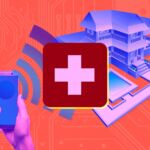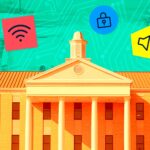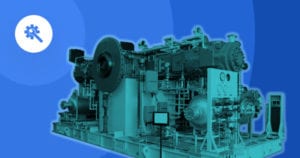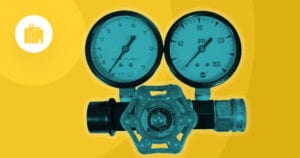
There’s been so much buzz about the Internet of Things (IoT) in the past couple of years. For today’s youngsters, the day will come when a computer is no longer seen as a separate object or device. With technology very much entwined in the basic fabric of everyday living, our children might feel offended if their obedient room lamp doesn’t immediately acknowledge their presence by switching itself on.
Over time, IoT will be a mindset rather than a steady stream of technology. Even though every other device in our homes, workplaces, or surrounding environments will be intelligent enough to connect and talk to each other, people will inevitably focus on the transformational possibilities for our world.
The realm of education is no exception to the influence of IoT. Until recently, educational technology pivoted more or less around virtual conferencing and classrooms, online tutorials and similar offerings. However, this is only the beginning. Below are five ways the Internet of Things can influence education and learning.
1. Connect Academies All Over the Map
Some of the latest IoT artillery in this field include digital highlighters, smart boards, and even smarter boards. This means your printed text could be digitally transferred to your smartphone or any other app at an incredible speed through tools like C-Pen and Scanmarker. Interactive boards can receive, acknowledge and reciprocate information, simplifying and accelerating the overall learning experience.
Just imagine a scenario where students sitting in a classroom or at their desk at home can interact with their classmates, mentors, and educators scattered across the world. Now, let’s suppose the lesson of the day is focused on sea life. To give students a really exciting, and higher education experience, the teacher decides to access live information generated through sensors and live feeds monitoring a particular body of water.
2. Conserve and Sustain to Survive and Flourish
With the aid of IoT, a variety of options are possible in terms of environmental and energy conservation, ecosystem regulation, traffic, and transport, to name a few can help schools build up their budgets and offer better learning opportunities. For example, a school district in Pennsylvania saved a fortune on energy by using IoT to support its energy monitoring and control program and reinvested the savings into their education programs. After all, living green lifestyles is the way to go for all of us. We might as well put it to work so we can invest in more critical areas.
3. Win Over Students and Parents With a Safe and Secure Learning Environment
The safety and security of students are paramount whether you are a parent, educational authority, security official or concerned citizen. With empowered sensors, RFIDs, cameras, and connected devices, monitoring and surveillance of entire buildings are possible. Instant notifications, alerts and configured actions would be a significant addition to the security and safety of schools and other educational institutions.
4. Grant Parity For All
The connected world of everything has a lot in store for students requiring modified learning plans and exceptions. There are already a number of devices, tools and apps that creating appropriate learning experiences while bringing them at par with the rest of the class. One such example is the Lechal shoe project, which enables the visually challenged to navigate the world better through technology.
5. Turn Learners Into Creators
IoT promotes and paves the way for creativity. For children, there’s nothing better than learning the nuances and application of hyper-connectivity first hand. After all the predictions regarding the enormous number of connected communication and decision-making devices in the years to come, this is an excellent opportunity for schoolchildren to understand, build and control such systems themselves.
The Future Trajectory of IoT in Education and Learning: Bumpy or Smooth?
IoT has the potential to strip aware common barriers in education such as economic status, geography, language and physical location. But once the initial glitz of being “super and hyper-connected” fizzles out, there are more important questions that need to be answered.
Converging education with technology is not just about bringing learning resources or making learning simpler and faster. It’s about quality, impact and community acceptance too. Even if all the fancy resources and technology is at our children’s fingertips, it is still a long and tough road ahead for IoT to reform education in a path-breaking and everlasting way. Nevertheless, the seeds are sown well and the harvest appears to be promising.





 Related Podcast Episode
Related Podcast Episode




 Related Applications
Related Applications


 Latest IoT News
Latest IoT News







